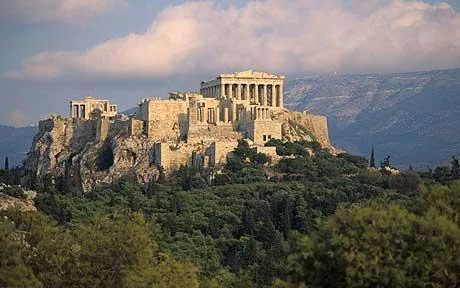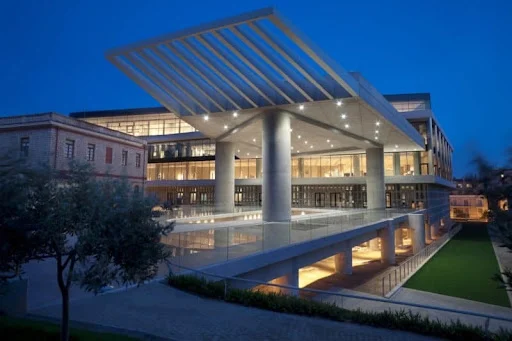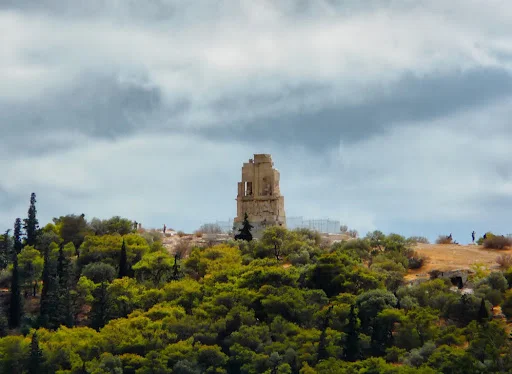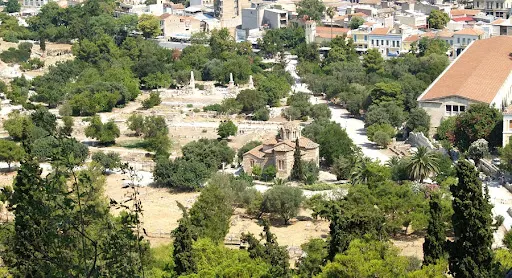Athens is the historical capital of Europe, with a long history, dating from the first settlement in the Neolithic age. In the 5th Century BC (the “Golden Age of Pericles”) – the culmination of Athens’ long, fascinating history – the city’s values and civilization acquired a universal significance.
Over the years, a multitude of conquerors occupied Athens, and erected unique, splendid monuments – a rare historical palimpsest. In 1834, it became the capital of the modern Greek state and in two centuries since it has become an attractive modern metropolis with unrivaled charm.
The Athens Acropolis
A large part of the town’s historic centre has been converted into a 3-kilometre pedestrian zone (the largest in Europe), leading to the major archaeological sites (“archaeological park”), reconstructing – to a large degree – the ancient landscape.
The tour starts at the temple of Olympian Zeus (6th c. B.C.), one of the largest in antiquity and close by Hadrian’s Arch (131 A.D.), which forms the symbolic entrance to the city. From there, walking along Dionysou Areopaghitou Street (on the south side of the Acropolis) you pass the ancient Theater of Dionysos (5th c. B.C.) where most of the works by Sophocles, Euripides, Aeschylus and Aristophanes were performed. Continuing, you will reach the ruins of the Asklepieion (5th c. B.C.) and the Stoa of Eumenes (2th c. B.C.) and from there the Odeion of Herodes Atticus, which was built in 161 A.D. and is nowadays the venue of the performances of the Athens Festival.
the temple of Olympian Zeus (6th c. B.C.)
From there you climb up to the sacred rock of the Acropolis, the site of some of the most important masterpieces of worldwide architecture and art, the most renowned of which is the Parthenon temple. Apart from this, also impressive are the Propylaea, the temple of the Athene Nike and the Erechtheion, while you must not skip a visit to the Museum, located close to the Parthenon. Moreover, from the rock you have an impressive view of the city.
the new Museum of the Acropolis of Athens
Only 300m away from the sacred rock of Acropolis stands the impressive Acropolis Museum, one of the most important contemporary works of architecture in Athens. It is made of steel, glass and concrete and it houses 4,000 priceless finds from the Acropolis monuments that represent its history and function as the most important religious centre of ancient Athens.
Philopappou Hill
Coming down from the Acropolis you arrive at the Areios Pagos, the most ancient law court of the world. Opposite it is Philopappou Hill, with its beautiful cobbled little roads and the Roman monument by the same name on its top, while close by is the Pnyx, where the citizens of ancient Athens used to assemble and exert their democratic rights.
Ancient Agora of Athens
Walking farther along the pedestrian road you arrive at the Ancient Agora, which was the commercial, political and religious centre of ancient Athens. A visit to the archaeological site will give you the opportunity to become acquainted with the workings of Classical Athenian democracy.
From there, via Ermou Street, you arrive at the Kerameikos, the largest cemetery of the ancient city, with impressive tomb sculptures and stelae. The Iridanos River, sacred in antiquity, runs through the archaeological site.
✔ How to organize your holidays in Athens
Ferry to the islands: Book your ferry to to Santorini, Mykonos and other islands.
Hotels: Discover our selection with the best hotels and accommodation in Athens.
Tours and Activities: Explore the city with some amazing tours and activities.
Car rentals: Discover the the surroundings on your own by booking your car.














